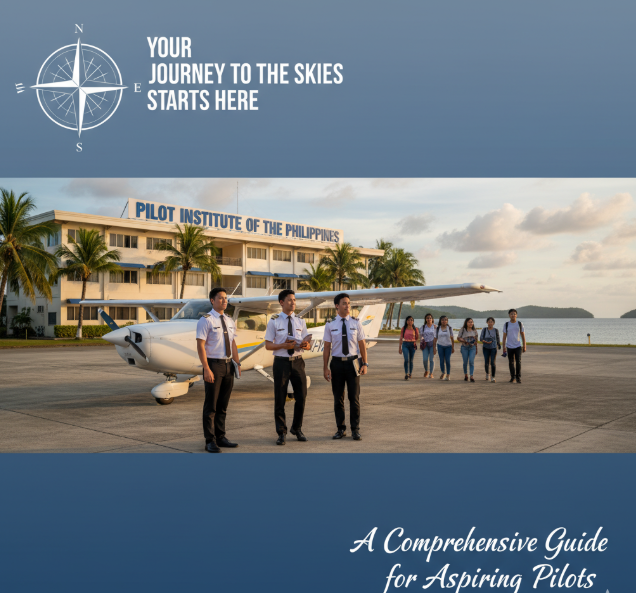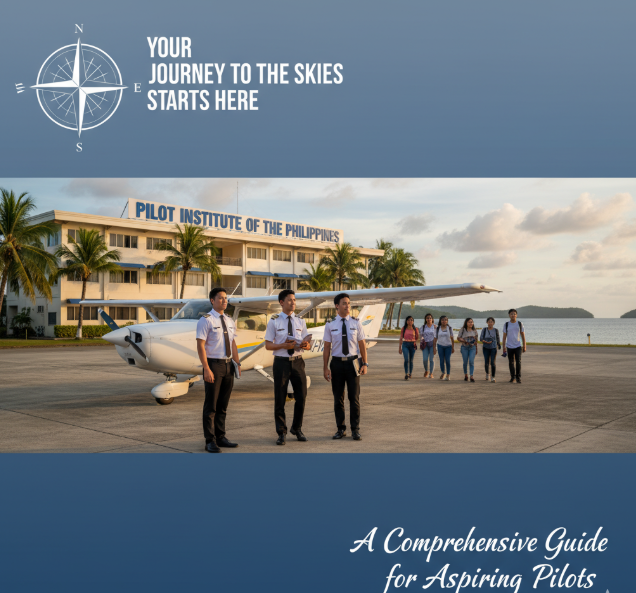
The aviation industry in the Philippines is rapidly growing, fueled by an increasing demand for skilled pilots to manage both local and international air travel. For aspiring aviators, pilot training institutes in the Philippines provide the foundation for a successful career in aviation. This guide explores the various aspects of pilot training, the importance of aviation in the Philippines, and the role that pilot institutes play in shaping the future of aviation professionals.
Introduction to Pilot Institute in Philippines
What Is a Pilot Institute?
A Pilot Institute, also known as a flight academy or aviation institute, is an educational institution where students are trained to become professional pilots. These institutes offer comprehensive programs designed to equip individuals with the necessary skills, knowledge, and certifications to operate aircraft. The training programs are rigorous, focusing on both theoretical knowledge and practical flying experience.
In the Philippines, pilot institutes not only prepare students for national aviation requirements but also align with international aviation standards, making graduates highly competitive in the global aviation sector.
Importance of Aviation in the Philippines
Aviation in the Philippines is a cornerstone of the nation’s economic and tourism industries. With more than 7,000 islands, air travel is essential for connectivity between regions and for international tourism. The Philippines is also strategically located in Southeast Asia, making it a hub for international flights. Consequently, the demand for qualified pilots is high, which has led to the growth of specialized pilot training institutions across the country.
History and Development of Aviation in the Philippines
Early Aviation History of the Country
The history of aviation in the Philippines dates back to the early 20th century. The first recorded flight in the Philippines occurred in 1911, when a plane from the United States arrived in the country. Over the next few decades, aviation infrastructure began to develop, with the establishment of the Philippine Air Force (PAF) in 1947, marking the nation’s commitment to building a strong aviation sector.
In the 1950s, commercial aviation took flight in the Philippines with the founding of Philippine Airlines (PAL), the country’s first commercial airline. This marked the beginning of a new era of air travel, both domestically and internationally. Over time, the industry continued to evolve, with significant improvements in air safety standards, technology, and passenger services.
Milestones in Philippine Aviation
- Philippine Airlines (PAL): As the nation’s flagship carrier, PAL played a pivotal role in shaping the aviation industry. It became the first airline in Asia to fly trans-Pacific routes, helping to connect the Philippines to major international markets.
- The Philippines’ Civil Aviation Authority (CAAP): Established in 2008, the CAAP is the governing body responsible for overseeing civil aviation in the country. It ensures that aviation standards meet international safety and regulatory guidelines.
- International Aviation Recognition: Over the years, the Philippines has earned recognition from global aviation agencies, including the International Civil Aviation Organization (ICAO) and the European Union Aviation Safety Agency (EASA), which has helped enhance the reputation of Filipino pilots worldwide.
- Growth of Low-Cost Carriers: In recent decades, the emergence of low-cost carriers such as Cebu Pacific and AirAsia Philippines has revolutionized the domestic travel landscape, creating additional demand for pilots.
Current Role of Pilot Institutes in the Philippines
How Pilot Institutes Function Today
Pilot institutes in the Philippines serve as the training ground for future pilots, offering various programs that lead to internationally recognized certifications. These institutions provide both theoretical instruction (covering subjects such as meteorology, navigation, aviation regulations, and flight safety) and practical training (conducted on actual aircraft and flight simulators).
Role in Civil Aviation, Defense, and Space Exploration
Pilot institutes play a critical role in supporting both civil aviation and military defense. Graduates from these programs are trained to fly commercial airlines, private jets, and cargo planes, ensuring safe and efficient air transport within the country and globally.
Some pilot training institutions also offer specialized programs for those interested in space exploration or military aviation, further diversifying career opportunities for Filipino pilots. As the space industry grows worldwide, the Philippines is also investing in training programs to prepare pilots for space tourism and commercial space flights.
Eligibility, Training, and Skills Required
Basic Qualifications for Pilot Training
To enroll in a pilot training program in the Philippines, candidates must meet several basic eligibility requirements:
- Age: Candidates must be at least 17-18 years old to begin training.
- Health: A Class 1 medical certificate issued by a certified aviation medical examiner is required to ensure that the candidate is fit to fly.
- Education: A high school diploma is typically required, but some institutions may prefer candidates with a bachelor’s degree, especially for those pursuing advanced aviation courses.
Technical and Soft Skills
In addition to meeting the basic qualifications, aspiring pilots must possess certain skills:
- Technical Skills: These include a deep understanding of navigation, meteorology, aircraft systems, and flight dynamics. Pilots must be adept at operating flight instruments, interpreting weather data, and calculating flight paths.
- Soft Skills: Strong leadership, communication, and problem-solving abilities are essential, as pilots must often work under pressure and make quick decisions during flights.
Institutes, Academies, and Training Centers in Philippines
Major Pilot Institutes in the Philippines
Several prestigious pilot institutes in the Philippines offer world-class training programs. These include:
- Philippine Airline Aviation School (PAAS): One of the oldest and most recognized flight schools in the country, PAAS provides training for aspiring airline pilots, flight instructors, and aircraft maintenance personnel.
- Aeron Aviation Training School: Located in Manila, Aeron offers comprehensive pilot training programs, including courses for Private Pilot License (PPL), Commercial Pilot License (CPL), and Flight Instructor certifications.
- Mactan Aviation Training Center: Based in Cebu, this academy provides specialized pilot training, focusing on both domestic and international aviation standards.
- Fil-Asian Aviation School: A well-established institution that offers training programs for both Private Pilots and Commercial Pilots, as well as specialized courses in Aircraft Maintenance.
- Cebu Pacific Aviation Academy (CEBAA): This academy is affiliated with Cebu Pacific and is dedicated to training the next generation of pilots for one of the leading budget carriers in Asia.
Government Initiatives
The Philippine Government plays an essential role in supporting pilot training and aviation education. Through agencies like the Civil Aviation Authority of the Philippines (CAAP), the government ensures that flight training institutions meet the highest safety and regulatory standards. Additionally, government programs encourage aspiring pilots by offering financial aid and scholarships to deserving candidates.
Technology and Innovation in Aviation Training
Advances in Flight Training Technology
The aviation industry continues to evolve with the incorporation of advanced technologies. Pilot training programs in the Philippines have embraced innovations like:
- Flight Simulators: These sophisticated devices replicate real-flight conditions, offering trainees the opportunity to practice maneuvers without the risks associated with actual flight.
- AI and Space Travel: Some institutes are beginning to incorporate artificial intelligence (AI) and space exploration training, preparing pilots for future careers in commercial space travel.
Global Aviation Agencies
Aviation agencies such as NASA, ISRO, CNSA, and ESA play a significant role in advancing global aviation and space exploration. The Philippines’ aviation institutions are increasingly looking to align with these agencies’ standards, ensuring that Filipino pilots can compete on the global stage.
Challenges Faced in Pilot Training in the Philippines
Despite the promising prospects of a career in aviation, there are challenges that aspiring pilots face in the Philippines:
- Infrastructure Gaps: Limited access to advanced training aircraft and flight simulators in some areas can hinder the quality of education.
- Costs: Flight training in the Philippines can be expensive, and many students need financial assistance or scholarships to afford the programs.
- Brain Drain: Many skilled Filipino pilots seek employment abroad due to higher salary opportunities, leading to a shortage of pilots within the country.
Future of Pilot Institutes in Philippines
The future of pilot institutes in the Philippines looks promising. With the growth of space tourism, private aviation, and artificial intelligence in the cockpit, new training opportunities are emerging for future pilots.
National Projects
With the development of programs like Gaganyaan in India and Artemis by the United States, the Philippines may also consider expanding its aviation training programs to incorporate space-related technologies and interplanetary missions, opening up even more career opportunities for Filipino pilots.
Career Path & Opportunities
Step-by-Step Career Guide
- Education: Begin by completing secondary education and enrolling in a pilot academy or aviation institute.
- Basic Pilot License: Obtain a Private Pilot License (PPL) as the first step in your training.
- Commercial Pilot License (CPL): After gaining experience, you can upgrade to a CPL, allowing you to fly commercially.
- Advanced Training: Pilots can pursue specialized training programs for airline or space exploration careers.
- Employment: Graduates can seek employment with local airlines, international carriers, or even space agencies.
Salary Expectations
A starting salary for a commercial pilot in the Philippines may range from PHP 50,000 to PHP 70,000 per month, with experienced pilots earning significantly higher. Opportunities for international flight training also provide access to global salary scales.
FAQs
- How much does pilot training cost in the Philippines?
Pilot training costs vary, but the total expense can range between PHP 1,500,000 to PHP 3,000,000, depending on the program. - Which is the best aviation institute in the Philippines?
The best institutes include PAAS, Aeron Aviation, and CEBAA, each offering world-class training programs. - What qualifications are needed for pilot training in the Philippines?
Basic requirements include a high school diploma, a medical certificate, and being at least 17 years old. - Is international flight training available in the Philippines?
Yes, many Filipino flight schools offer international certification and training programs recognized worldwide. - What is the future of aviation in the Philippines?
With the growing demand for air travel, as well as new innovations in space tourism and private aviation, the future of aviation in the Philippines is bright.
Conclusion
The aviation industry in the Philippines offers exciting career prospects for aspiring pilots. With top-tier flight schools, government support, and evolving technology, aspiring aviators are well-equipped to succeed in both domestic and international markets. If you’re passionate about aviation, pursuing a career through a Pilot Institute in the Philippines could be the first step toward an exciting and fulfilling profession in the skies.
